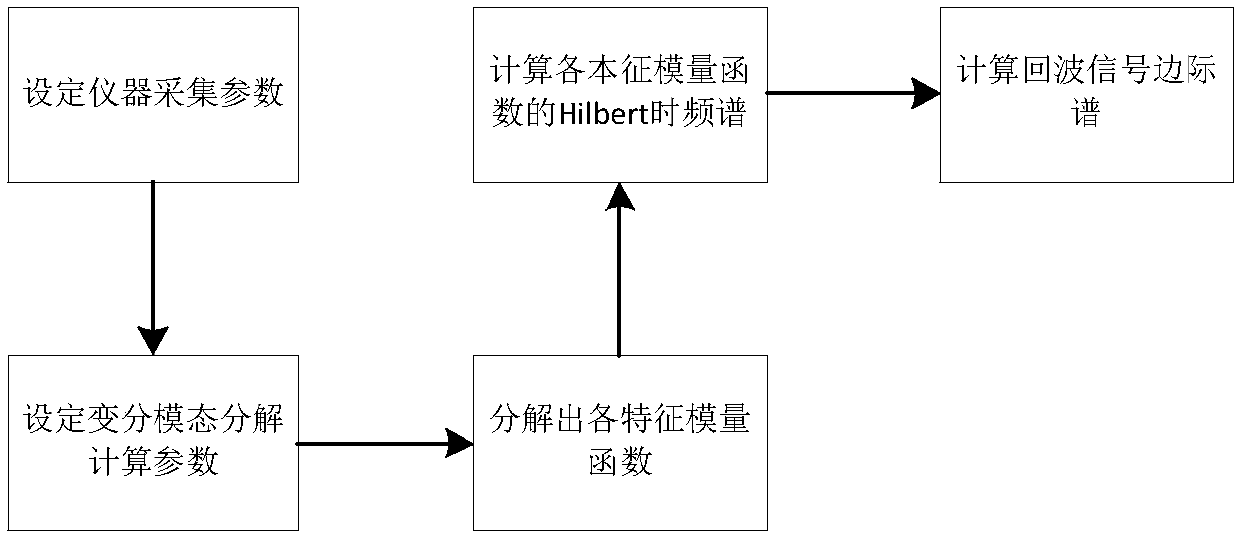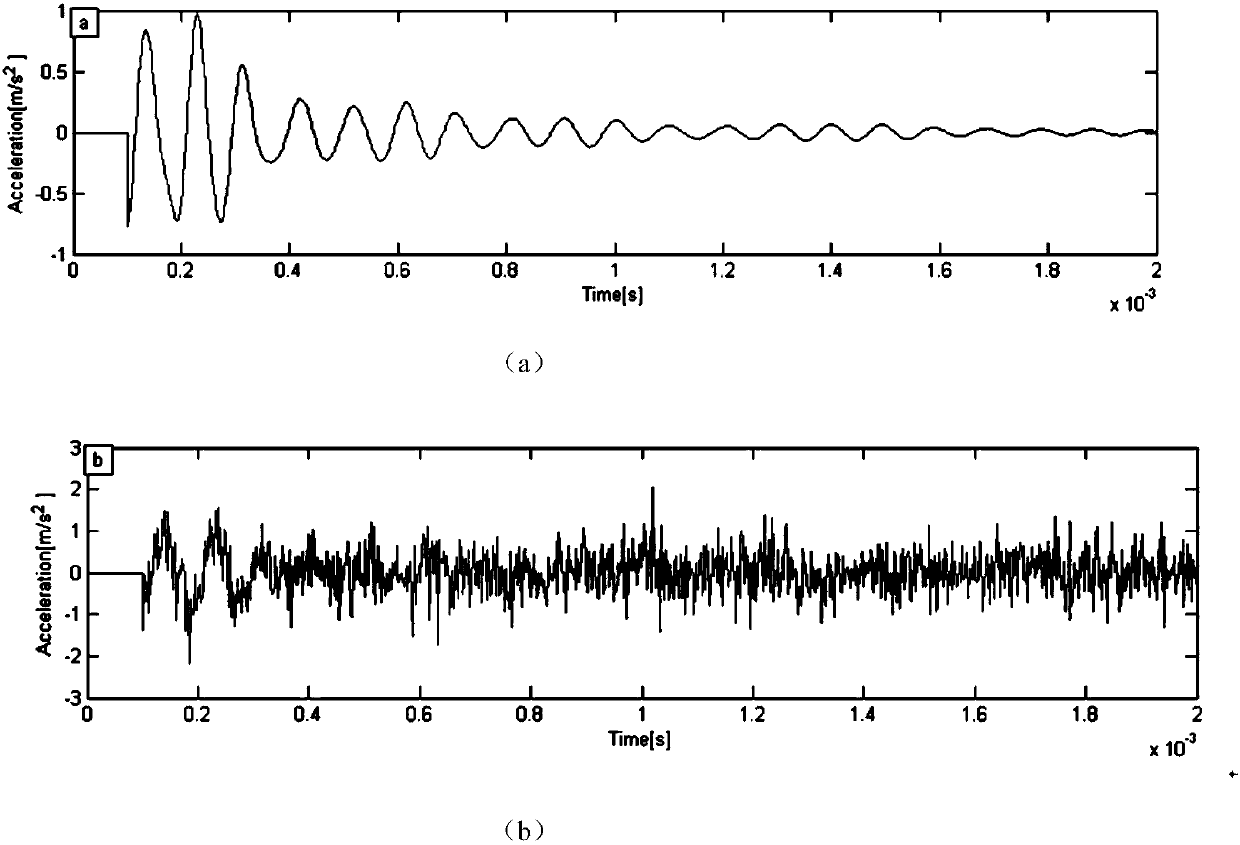Shock echo signal analysis method based on variational mode decomposition
A technique of variational modal decomposition and signal analysis method, which is applied in the processing of detected response signals, using ultrasonic/sonic/infrasonic waves, complex mathematical operations, etc. problems, to improve the mathematical foundation and practical effects, suppress noise, and effectively suppress noise interference
- Summary
- Abstract
- Description
- Claims
- Application Information
AI Technical Summary
Problems solved by technology
Method used
Image
Examples
Embodiment
[0103] Shock echo is a structural non-destructive testing based on transient P waves, and the thickness of components is calculated according to the following formula:
[0104]
[0105] Among them, T is the thickness of the concrete structural member, V p is the wave speed of P wave, ω c is the dominant frequency of the amplitude spectrum.
[0106] P wave velocity V p There is the following relationship with the structure's Young's modulus E, Poisson's ratio ν and structure density ρ:
[0107]
[0108] Take a concrete floor as the test object, the size of the concrete floor is 1.50m×1.50m, and the thickness is 0.20m. Young's modulus E, Poisson's ratio ν and structural density ρ are 37.8GPa, 2500kg / m3, and 0.2, respectively. According to formula (15), it can be obtained that the longitudinal wave velocity is 4099m / s. Shock echo thickness is calculated according to formula (14), and the theoretical value of Fourier main frequency should be 10247Hz.
[0109] For the a...
PUM
 Login to View More
Login to View More Abstract
Description
Claims
Application Information
 Login to View More
Login to View More - R&D
- Intellectual Property
- Life Sciences
- Materials
- Tech Scout
- Unparalleled Data Quality
- Higher Quality Content
- 60% Fewer Hallucinations
Browse by: Latest US Patents, China's latest patents, Technical Efficacy Thesaurus, Application Domain, Technology Topic, Popular Technical Reports.
© 2025 PatSnap. All rights reserved.Legal|Privacy policy|Modern Slavery Act Transparency Statement|Sitemap|About US| Contact US: help@patsnap.com



